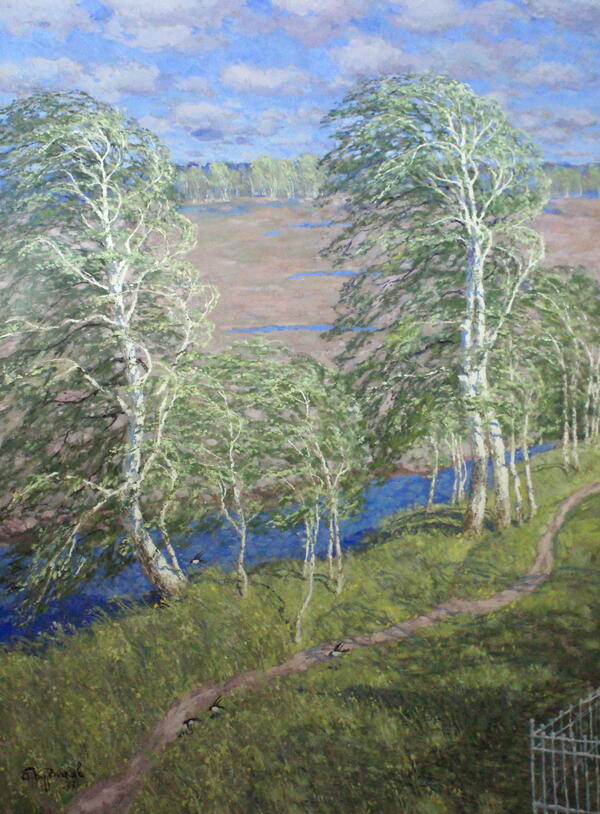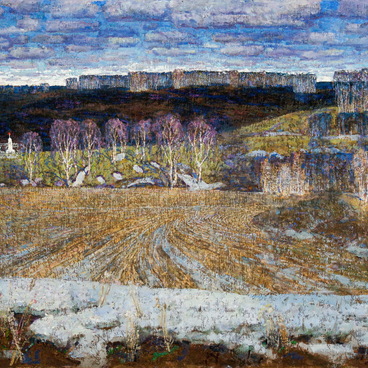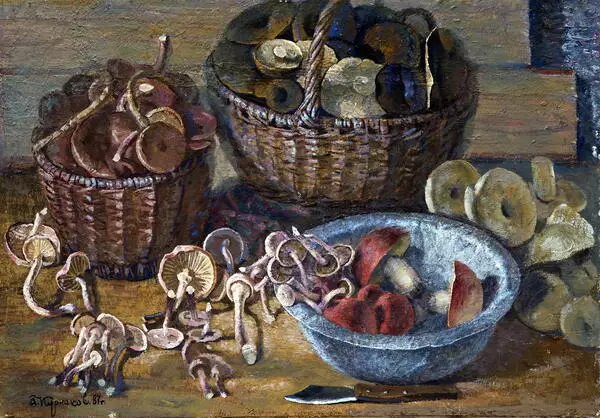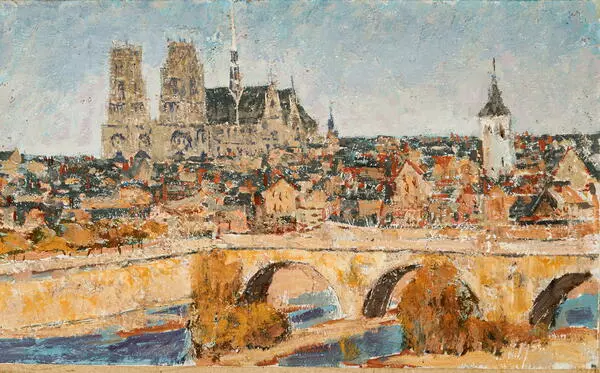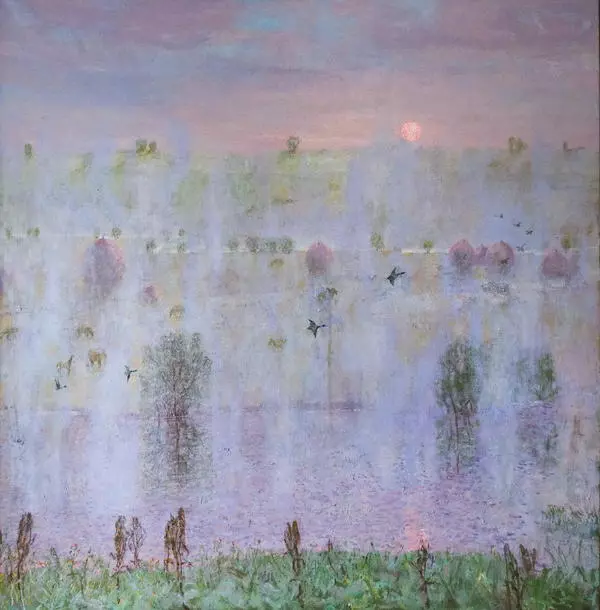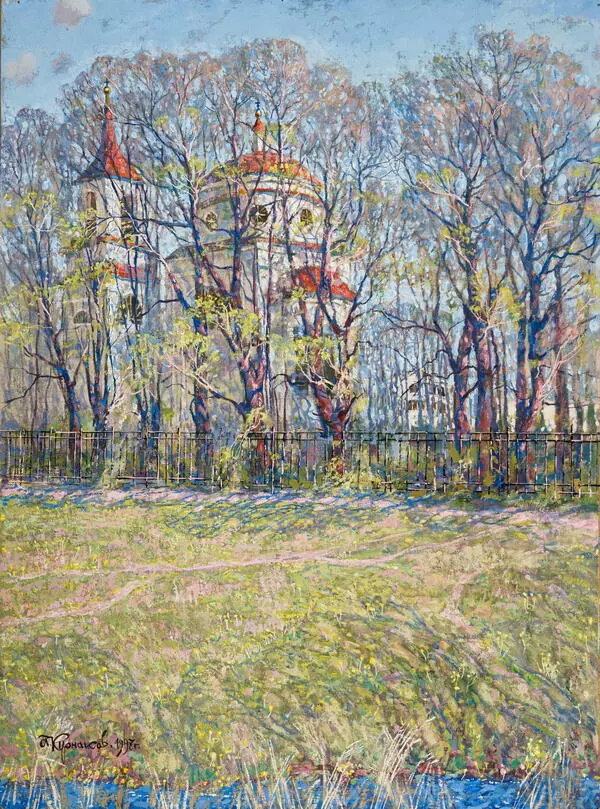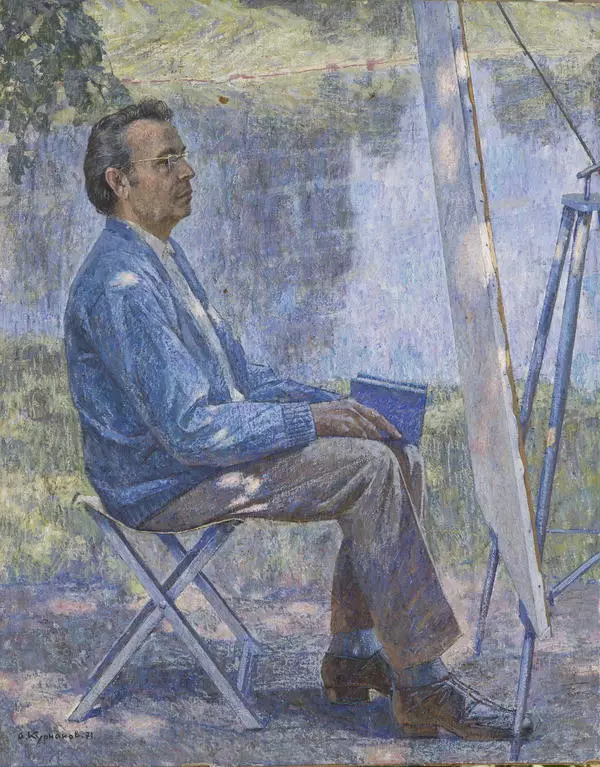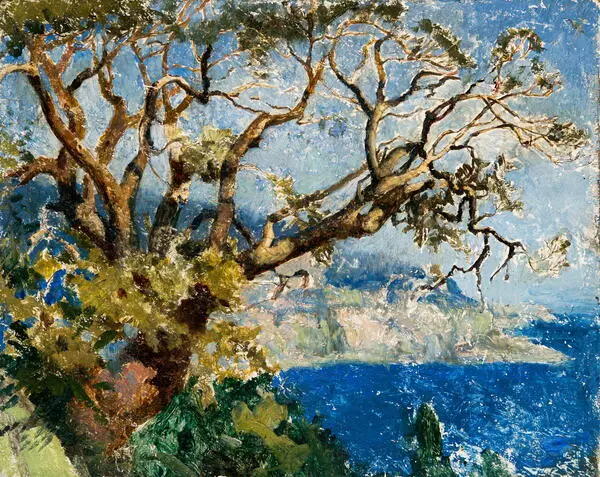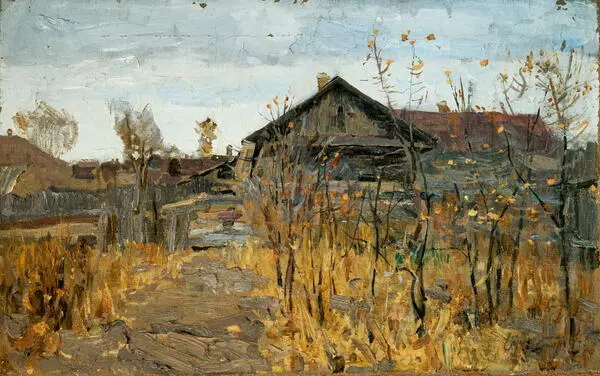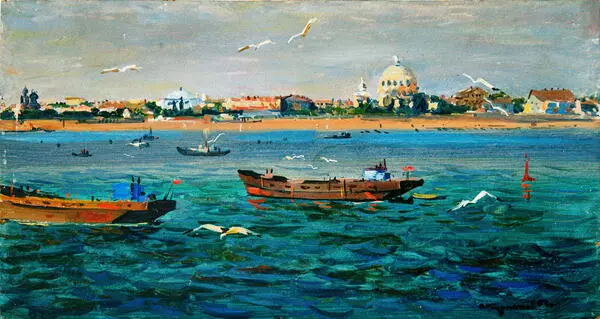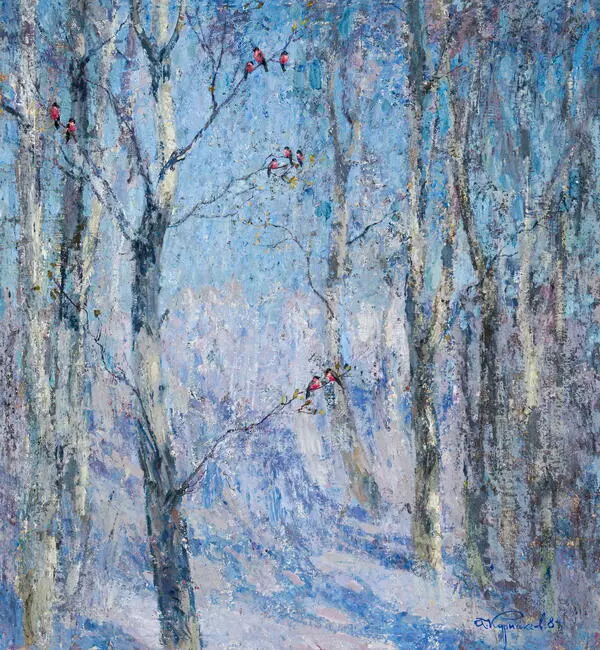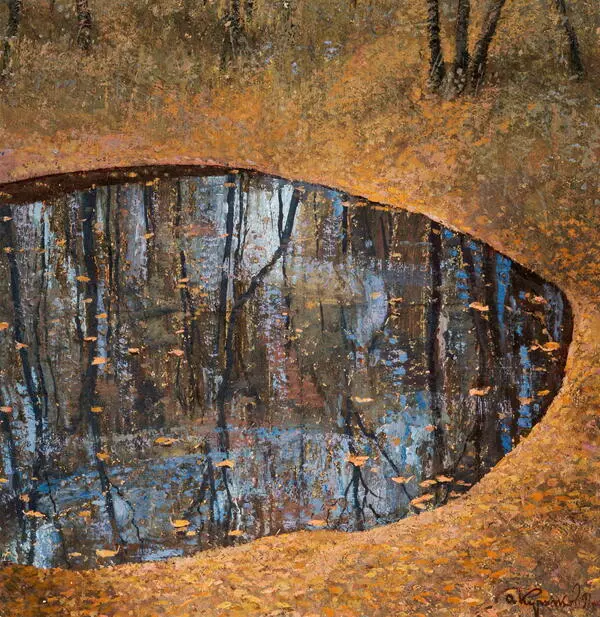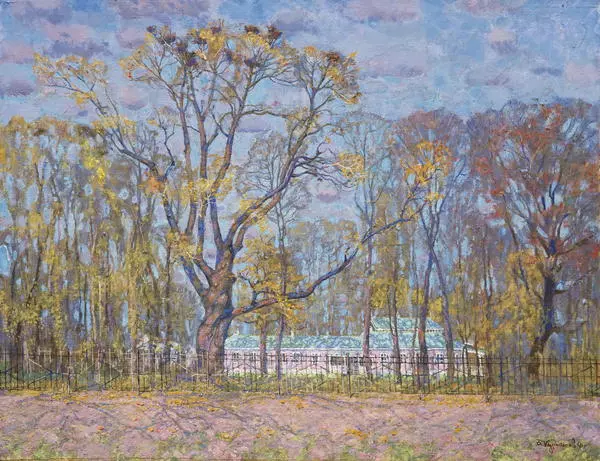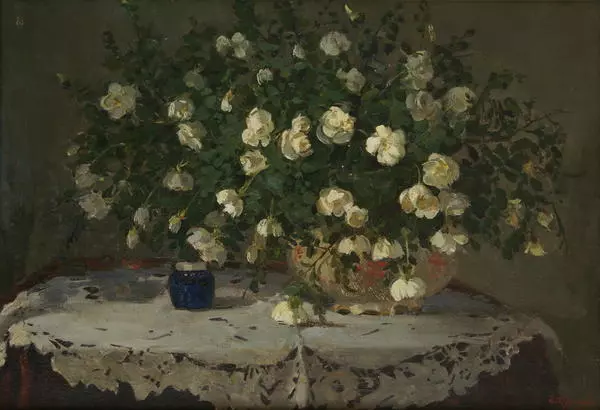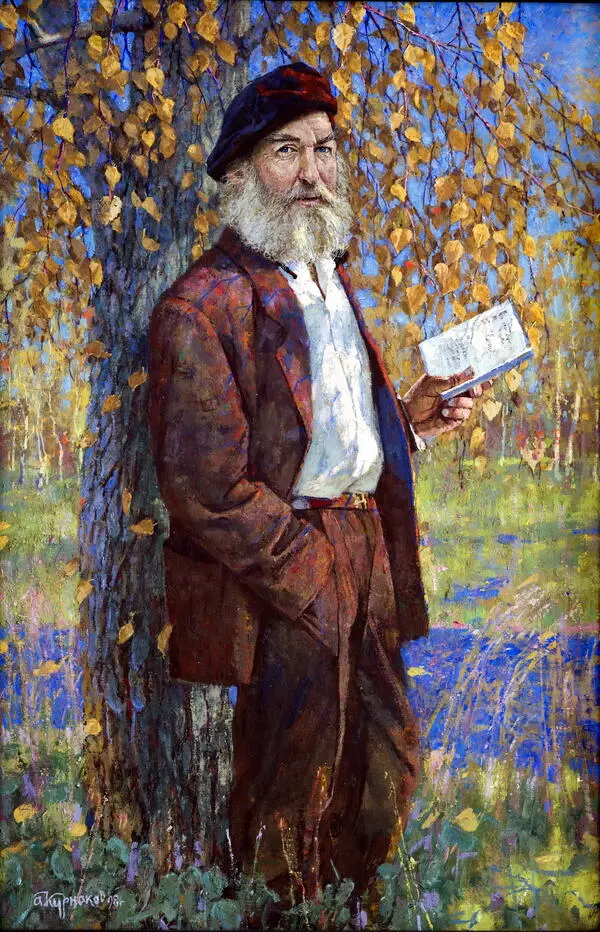With his painting “May Again”, Andrey Ilyich Kurnakov, as always, celebrated the nature of his homeland. He depicted his beloved birches, large and small, both in the foreground and in the background. The trees have an aesthetic look: gusts of wind emphasize their branches that bend to the left.
The middle ground between the trees and the horizon shows pink and warm green shades of the earth, covered with blue water-filled hollows. This straw-colored expanse is bordered by the gracefully bent birch trees in the front and the grove in the distance, as well as the light azure sky and airy fluffy clouds.
The almost diagonal arrangement of the river and the path creates a sense of movement to the left. The foreground depicts fresh light green grass sprinkled with first spring flowers. To achieve this image, the artist uses small vertical strokes, specks, and dots. There are sand martins fearlessly flying above the ground that endow the painting with certain dynamics. These little birds have always been a symbol of happiness, coziness, and mirth.
Suddenly, just one small part of the painting changes the general impression of feeling unbridled joy at the sight of the coming spring and wakening nature. Kurnakov places shadows cast by an obelisk and a fence in the lower right corner, which completely change the message of the painting. The appearance of an unknown grave on the canvas makes everything, including the notion of May, allude to a certain commemorative date.
For all fellow Russians, and especially the artist’s peers, the month of May is associated with Victory Day celebrated on the 9th of May, which is the day of both great joy and great sorrow. Andrey Kurnakov was a front-line soldier who fought in the war from its beginning and to the very end and honored the memory of his fallen comrades-in-arms.
Even this sunlit landscape is a tribute and lasting memorial of profound gratitude and respect for their great sacrifice.
The message of the picture echoes the symbolic meaning of a birch. Nowadays it is considered the embodiment of the Russian soul, however, in earlier Russia, the attitude to this white tree used to be ambiguous. On the one hand, the birch was a tree of brides and young virgins. On the other hand, it was also associated with the world of the dead: the bottom of coffins was lined with birch rods, and birch bark was used for stuffing the pillows of the deceased. Birches also symbolized resurrection, renewal, and new beginnings across many cultures and mythologies.
The middle ground between the trees and the horizon shows pink and warm green shades of the earth, covered with blue water-filled hollows. This straw-colored expanse is bordered by the gracefully bent birch trees in the front and the grove in the distance, as well as the light azure sky and airy fluffy clouds.
The almost diagonal arrangement of the river and the path creates a sense of movement to the left. The foreground depicts fresh light green grass sprinkled with first spring flowers. To achieve this image, the artist uses small vertical strokes, specks, and dots. There are sand martins fearlessly flying above the ground that endow the painting with certain dynamics. These little birds have always been a symbol of happiness, coziness, and mirth.
Suddenly, just one small part of the painting changes the general impression of feeling unbridled joy at the sight of the coming spring and wakening nature. Kurnakov places shadows cast by an obelisk and a fence in the lower right corner, which completely change the message of the painting. The appearance of an unknown grave on the canvas makes everything, including the notion of May, allude to a certain commemorative date.
For all fellow Russians, and especially the artist’s peers, the month of May is associated with Victory Day celebrated on the 9th of May, which is the day of both great joy and great sorrow. Andrey Kurnakov was a front-line soldier who fought in the war from its beginning and to the very end and honored the memory of his fallen comrades-in-arms.
Even this sunlit landscape is a tribute and lasting memorial of profound gratitude and respect for their great sacrifice.
The message of the picture echoes the symbolic meaning of a birch. Nowadays it is considered the embodiment of the Russian soul, however, in earlier Russia, the attitude to this white tree used to be ambiguous. On the one hand, the birch was a tree of brides and young virgins. On the other hand, it was also associated with the world of the dead: the bottom of coffins was lined with birch rods, and birch bark was used for stuffing the pillows of the deceased. Birches also symbolized resurrection, renewal, and new beginnings across many cultures and mythologies.

